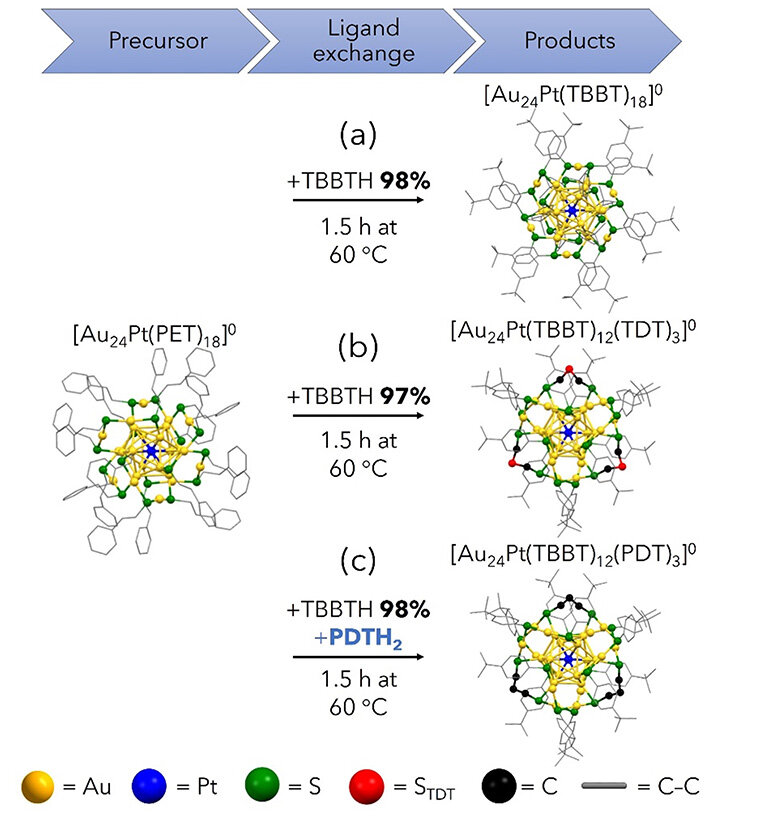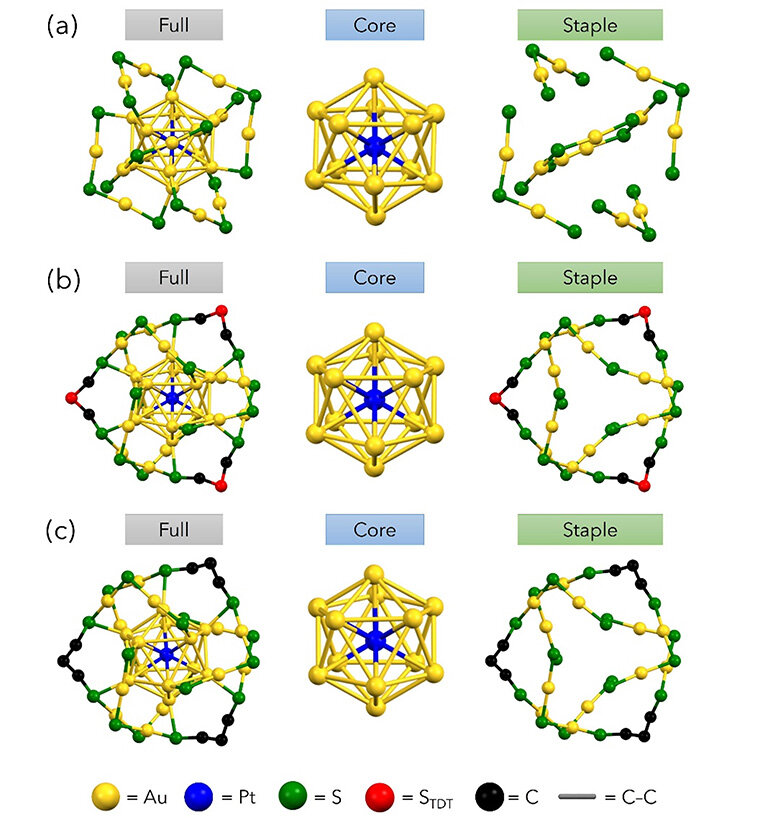2024.10.25 Friday
Improvement of Catalytic Activity by Controlling the Surface Structure of Metal Particles
Fine-tuning the reactions that produce hydrogen (H2) for use as a clean fuel is an important endeavour to fight against climate change. Researchers at Tohoku University and the Tokyo University of Science have succeeded in improving the catalytic activity for this reaction. The researchers established a synthesis method that can control the surface structure of small metal particles with a diameter of about 1 nm.
The results were published in the Journal of the American Chemical Society on October 15, 2024.

©Yuichi Negishi et al.
Hydrogen is an environmentally-friendly alternative to other energy sources such as fossil fuels. One method to extract the hydrogen from water is called the hydrogen evolution reaction (HER): a reaction driven by electricity that typically uses an electrocatalyst to lower the activation energy (and thus make the reaction more efficient). However, one downside is that it currently requires expensive rare metals such as platinum.
In order to make hydrogen fuels a more viable, affordable option, researchers looked at cheaper metals. They created an aggregate metal nanocluster (NC) combining gold (Au) with platinum (Pt) to achieve this. Since gold is not nearly as rare or costly as platinum, this combination lowers the price of producing hydrogen.

©Yuichi Negishi et al.
This study looked at AuPt nanoclusters (NCs) with two novel geometrical and electronic structures. "Compared to the conventional AuPt NCs, these structures had less bulky ligands, which was expected to facilitate access to the active site and improve catalytic activity," remarks Professor Yuichi Negishi (Tohoku University), "We've been analyzing how to improve these reactions for a while now, so we got a hint from our previous study where the length of the ligand had a significant effect on HER activity."

Upon testing their newly-generated AuPt NCs, they discovered that they achieved 3.5 and 4.9 times higher catalytic activity for the HER compared to conventional AuPt alloy catalysts.
This research has demonstrated a method to precisely control the surface structure of ultra-fine metal aggregates. It may also have alternative catalytic applications such as carbon dioxide reduction, carbon monoxide oxidation, alcohol oxidation, and oxygen reduction reactions. This finding may promote the development of new functional materials and move us closer to a world where we fill up with clean hydrogen instead of gasoline.
Publication Details
| Title | : | Atomically Precise Au24Pt(thiolate)12(dithiolate)3 Nanoclusters with Excellent Electrocatalytic Hydrogen Evolution Reactivity |
| Authors | : | Miyu Sera, Sakiat Hossain, Sara Yoshikawa, Kana Takemae, Ayaka Ikeda, Tomoya Tanaka, Taiga Kosaka, Yoshiki Niihori, Tokuhisa Kawawaki, Yuichi Negishi |
| Journal | : | Journal of the American Chemical Society |
| DOI | : | 10.1021/jacs.4c10868 |
About The Tokyo University of Science
Tokyo University of Science (TUS) is a well-known and respected university, and the largest science-specialized private research university in Japan, with four campuses in central Tokyo and its suburbs and in Hokkaido. Established in 1881, the university has continually contributed to Japan's development in science through inculcating the love for science in researchers, technicians, and educators.
With a mission of "Creating science and technology for the harmonious development of nature, human beings, and society," TUS has undertaken a wide range of research from basic to applied science. TUS has embraced a multidisciplinary approach to research and undertaken intensive study in some of today's most vital fields. TUS is a meritocracy where the best in science is recognized and nurtured. It is the only private university in Japan that has produced a Nobel Prize winner and the only private university in Asia to produce Nobel Prize winners within the natural sciences field.
■
Tokyo University of Science(About TUS)


